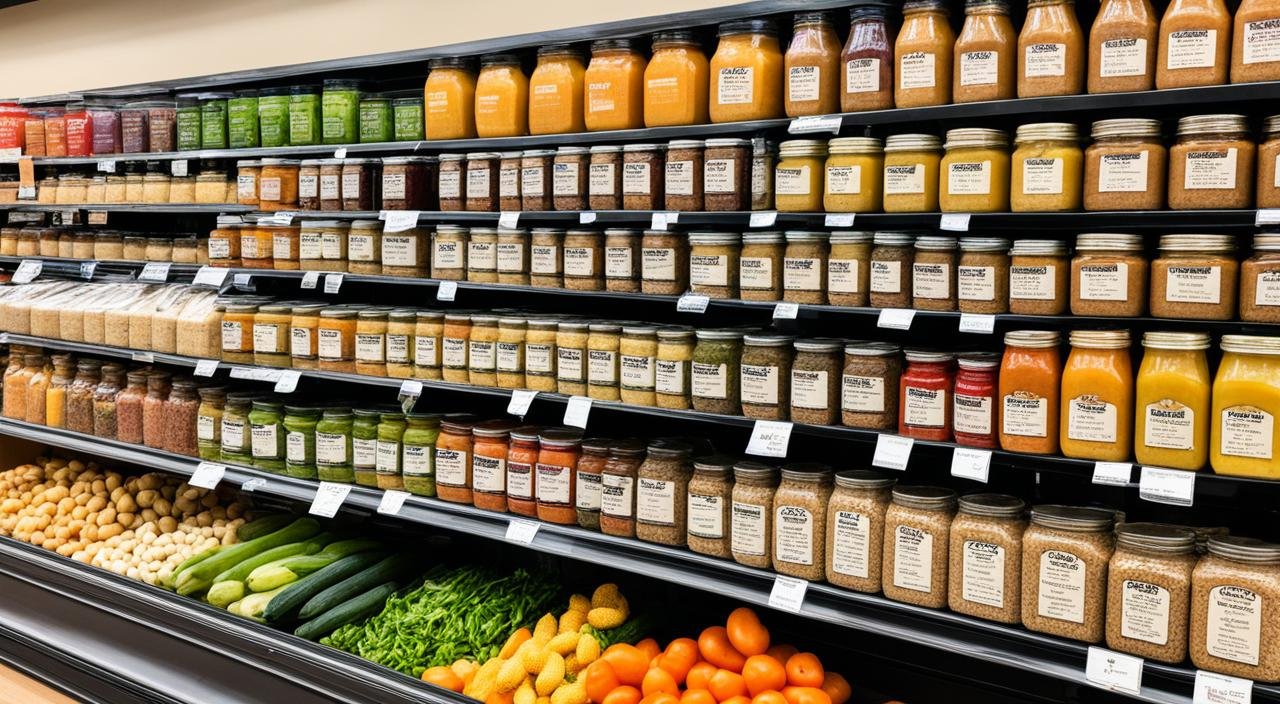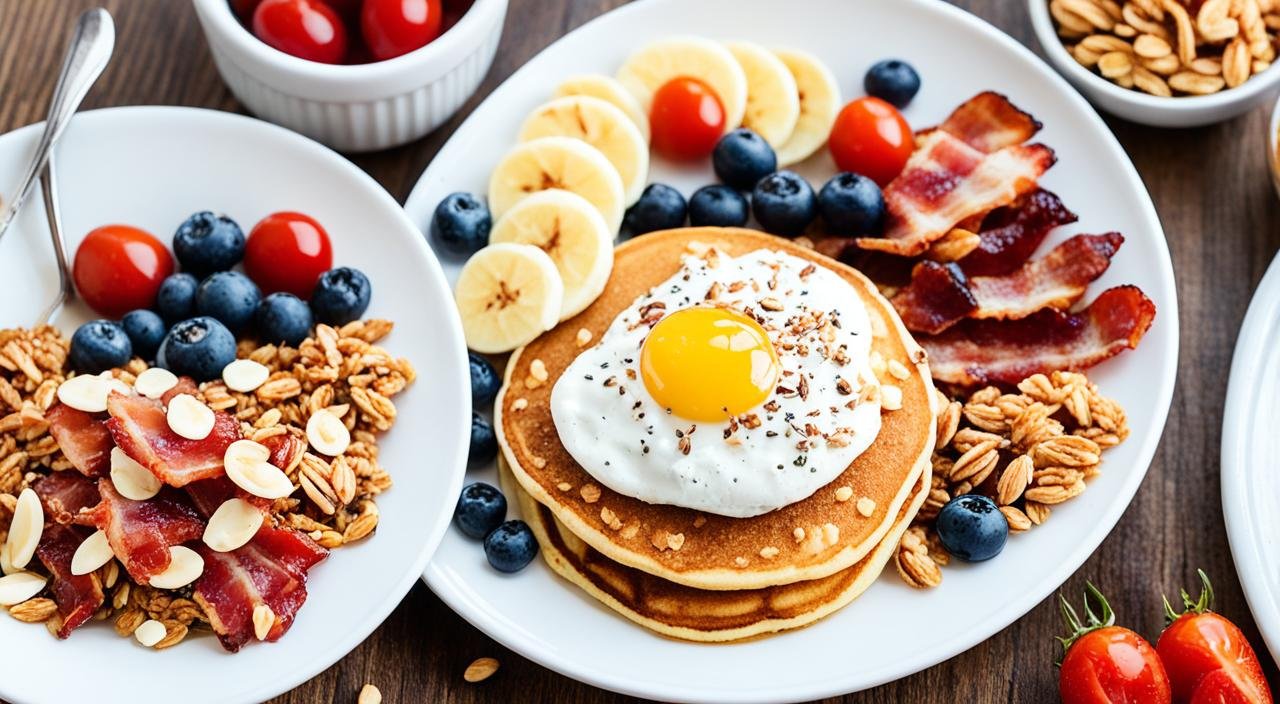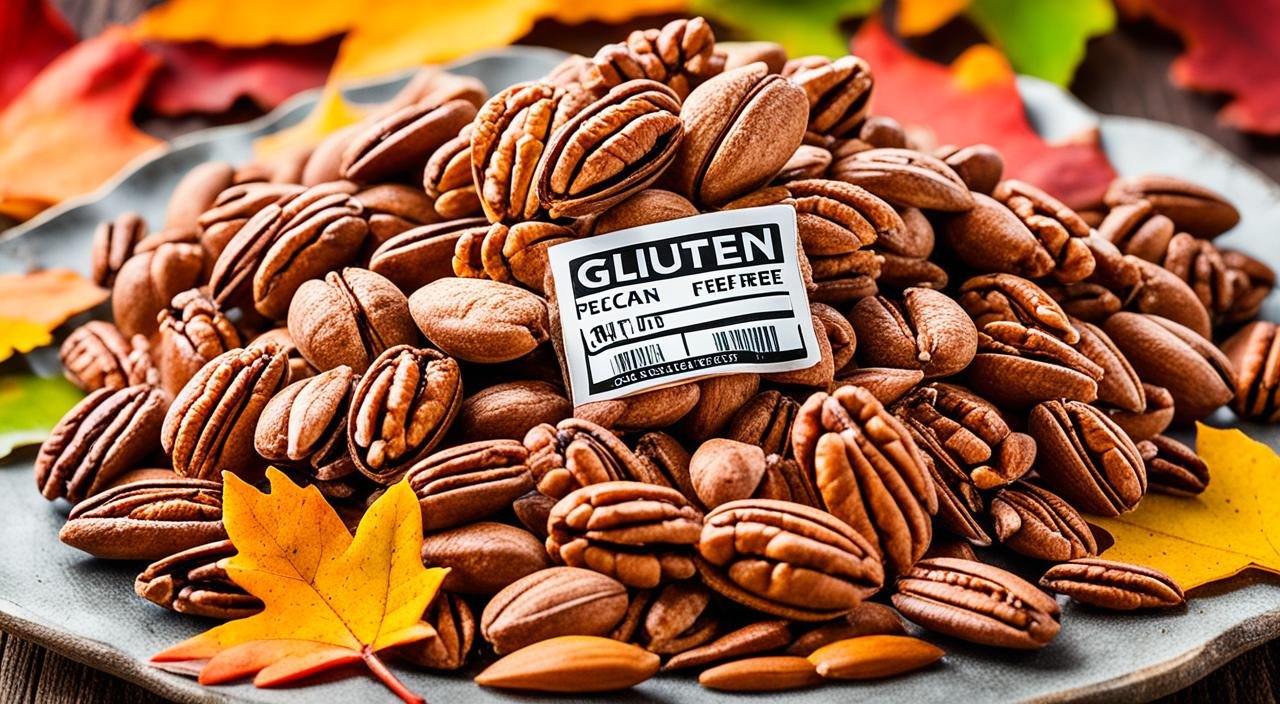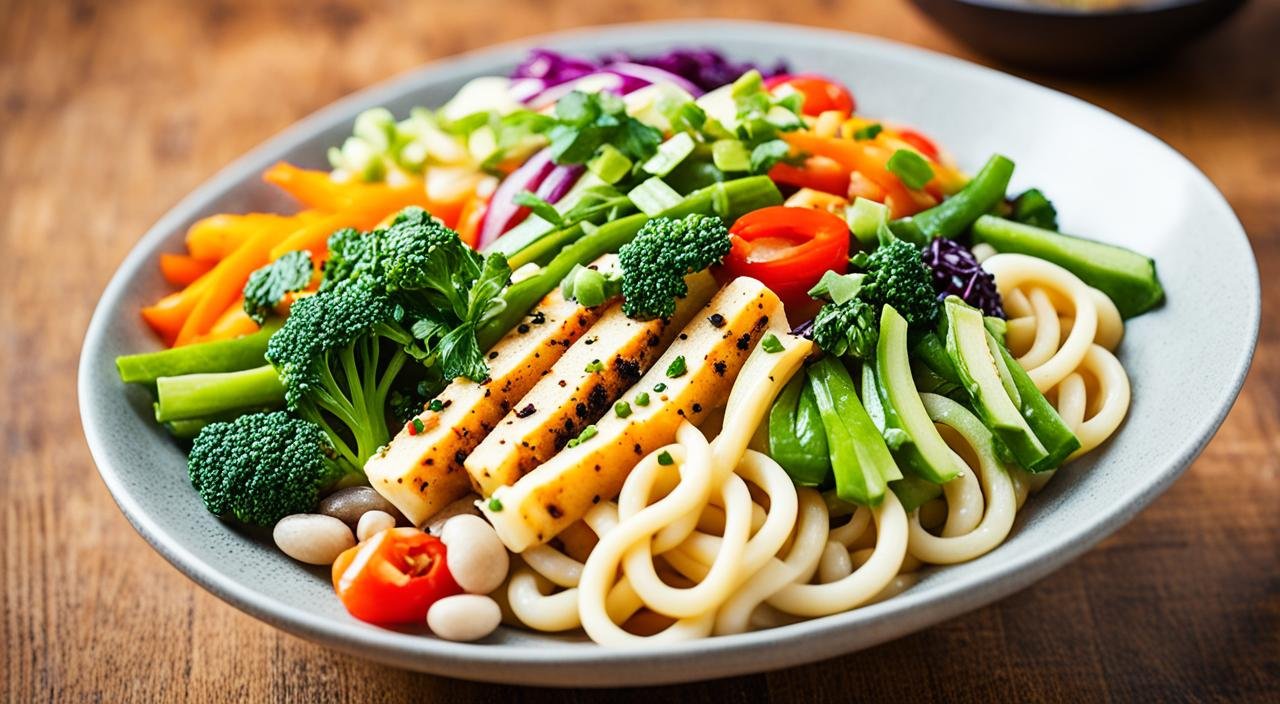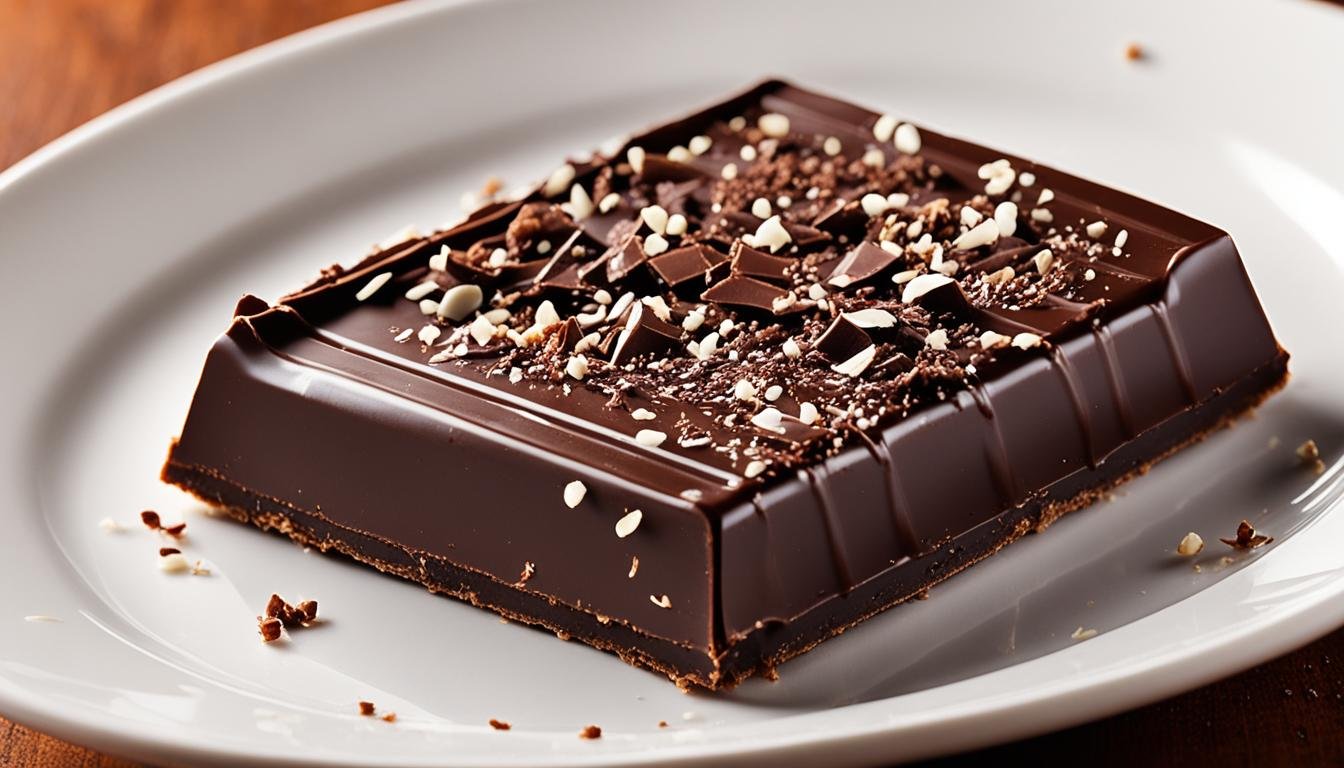Did you know about 20% of Americans eat gluten-free? It could be for food allergies, health reasons, or someone in your home avoiding gluten. But don’t worry – our stores have everything you need for gluten-free shopping.
The FDA set rules in 2013 for “gluten-free” labels. These products have less than 20 parts per million of gluten. Also, any gluten in them must be listed. So, you can trust the labels and find safe foods easily.
We have you covered from bakery to dairy to grocery with our gluten-free list. Find new gluten-free brands, plan your shopping, and fill your cart with tasty, healthy options. You’re ready to shop with ease for your dietary needs.
Key Takeaways
- Around 20% of Americans follow a gluten-free diet
- FDA regulations ensure “gluten-free” labels mean less than 20ppm of gluten
- Gluten-free options are widely available across grocery aisles
- Carefully read labels to identify safe, allergen-free foods
- Plan ahead and shop with confidence using this gluten-free grocery list
Understanding Gluten-Free Shopping
Shopping for gluten-free items can seem hard, but you can do it well with some tips. Whether you’re making a grocery list or already shopping, these gluten-free shopping tips will help you. They make shopping easier and more confident.
Gluten-Free Shopping Tips
- Check ingredients lists carefully to ensure the products are truly gluten-free.
- Look for the gluten-free certification logo on products to verify they meet the FDA’s gluten-free labeling requirements.
- Try our 365 brand, which offers a wide range of affordable and reliable gluten-free products.
- Remember that “wheat-free” doesn’t always mean “gluten-free,” so be sure to read labels thoroughly.
- Search for products by special diet to quickly locate hard-to-find gluten-free items.
Navigating Labels and Certifications
Understanding gluten-free labels and certifications helps a lot when shopping. The FDA says foods can be labeled gluten-free if gluten is less than 20 parts per million. Look for the certified gluten-free seal to know it meets this standard.
People with celiac disease might be okay with a little gluten. But, always talk to your doctor to see how much you can have.
With these gluten-free shopping tips and label guidelines, you can easily find what you need in the store. This way, you can be sure you’re getting the right products for your diet.
Essential Gluten-Free Pantry Staples
Starting a gluten-free journey means filling our pantry with the right items. Luckily, finding gluten-free foods is easy now. We have many choices for grains, beans, and legumes to make tasty meals.
Gluten-Free Grains
Gluten-Free Grains offer a great selection. Quinoa, millet, and sorghum are naturally gluten-free and great for our meals. Gluten-free pastas from brown rice, quinoa, chickpeas, or lentils are also popular, with sales up by over 20% last year.
Gluten-Free Beans and Legumes
Gluten-Free Beans and Legumes are key in a gluten-free diet. They are gluten-free by nature and packed with protein, fiber, and nutrients. Black beans, garbanzo beans, lentils, and split peas are essential in our gluten-free kitchen.
| Gluten-Free Pantry Essentials | Gluten-Free Grains | Gluten-Free Beans and Legumes |
|---|---|---|
| Almond flour, coconut flour, 1:1 baking powder, chocolate chips, dried fruit, shredded coconut, flaxmeal, chia seeds, hemp hearts, oats, nut butters, rice flour, arrowroot, beans, quinoa noodles, chickpea noodles, basmati rice, rice puffs, almond crackers, Mary’s thin crackers | Quinoa, millet, sorghum, brown rice pasta, quinoa pasta, chickpea pasta, lentil pasta | Black beans, garbanzo beans, lentils, split peas |
With these Gluten-Free Pantry Essentials, Gluten-Free Grains, and Gluten-Free Beans and Legumes, we’re set to make delicious, gluten-free meals. A bit of planning and exploring opens up a world of gluten-free cooking possibilities.
Gluten Free Grocery Shopping List
Shopping for gluten-free items can seem hard, but it’s easier with some knowledge and planning. Let’s look at the main parts of the grocery store and what gluten-free items you can find.
Produce Section
The produce section is full of gluten-free foods! You can find fresh fruits and veggies in their natural state. When shopping for Gluten-Free Produce, pick a variety of leafy greens, colorful veggies, and fruits in season. Frozen produce is also a good choice, lasting longer and being nutritious.
- Leafy greens: spinach, kale, romaine, arugula
- Colorful vegetables: bell peppers, broccoli, carrots, zucchini
- Fresh fruits: apples, berries, oranges, bananas
- Frozen fruits and veggies: peas, corn, mixed berries, cauliflower
Protein Sources
There are many Gluten-Free Protein options available. Choose lean meats, poultry, fish, eggs, and plant-based proteins like beans and lentils. Always check labels, as some processed items might have hidden gluten.
| Protein Source | Gluten-Free Options |
|---|---|
| Meat | Beef, chicken, turkey, pork (without breadcrumb coatings) |
| Seafood | Salmon, tuna, shrimp, tilapia |
| Eggs | Eggs (whole, scrambled, hard-boiled) |
| Plant-based | Beans, lentils, tofu, tempeh |
Always check labels to make sure the Gluten-Free Protein you pick is really gluten-free.
“Approximately 1 in 100 people worldwide have celiac disease, which necessitates a gluten-free diet.”
With some prep and careful shopping, you can easily make a Gluten-Free Grocery List. You’ll find lots of fresh, healthy, and tasty options in the produce and protein sections.
Stocking Your Gluten-Free Kitchen
Stocking a gluten-free kitchen means looking at the dairy and condiment sections. You’ll find Gluten-Free Dairy like almond, oat, and coconut milk. Also, there are many Gluten-Free Condiments and Sauces to choose from. These options make shopping easier for those on a gluten-free diet.
Dairy and Dairy Alternatives
The dairy aisle has lots of Gluten-Free Dairy products. You can find milk, yogurt, cheese, and butter that don’t have gluten. Brands like Yoplait, Chobani, Dannon, and Cabot make sure their gluten-free products are clear about it.
For those who prefer dairy alternatives, almond, oat, and coconut milk are great choices. They work well in many recipes.
Condiments and Sauces
When picking Gluten-Free Condiments and Sauces, always check the labels. Some condiments have wheat thickeners. Stick to things like ketchup, mustard, and vinegar-based dressings that are naturally gluten-free.
Brands like San-J and Primal Kitchen offer gluten-free condiments and sauces. These can make your meals taste better.
Having Gluten-Free Dairy, Gluten-Free Dairy Alternatives, and Gluten-Free Condiments and Sauces in your pantry is key. They help you make tasty and healthy gluten-free meals.
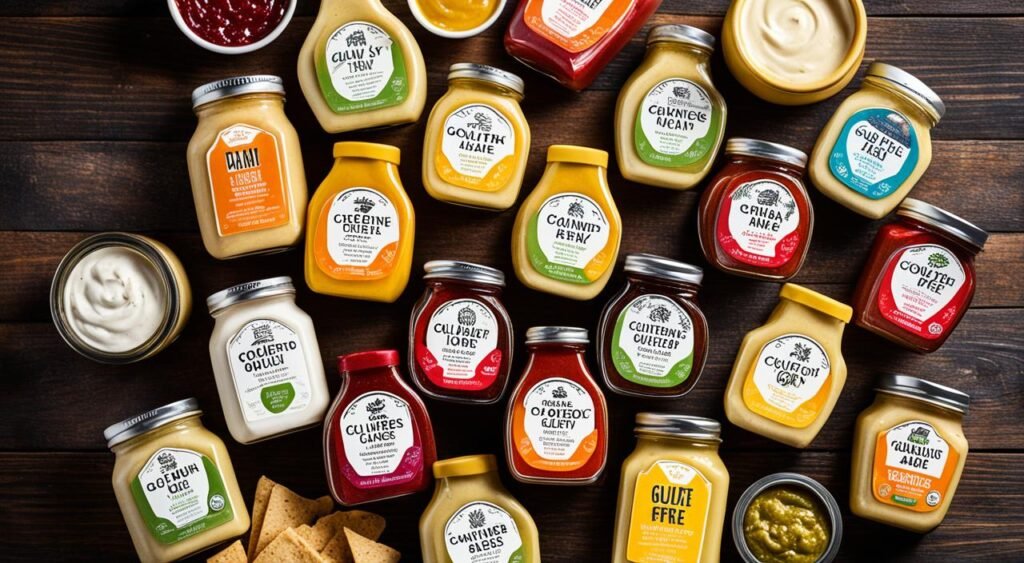
“Navigating the grocery store as a gluten-free shopper can be a daunting task, but with the right knowledge and resources, it becomes an empowering experience.”
Baking Essentials for a Gluten-Free Lifestyle
Living gluten-free doesn’t mean you can’t bake. With the right Gluten-Free Baking Essentials, you can make all your favorite treats. You’ll find everything from flours to sweeteners that make gluten-free baking easy.
Flours and Starches
There are many Gluten-Free Flours to pick from. Better Batter and Cup4Cup are great because they act like regular wheat flour. Ryze Gluten-Free Flour, made from rice, is perfect for certain diets. Almond Flour and Tapioca Flour add special flavors and textures to your baking.
- gfJules All Purpose Gluten-Free Flour
- Bob’s Red Mill 1-to-1 Gluten-Free Baking Flour
- Ryze Gluten-Free Flour
- Almond Flour
- Tapioca Flour
Baking Essentials
Don’t forget the baking basics like Gluten-Free Baking Substitutes. You’ll need sugar, brown sugar, honey, maple syrup, and coconut sugar for sweetness. Baking powder, baking soda, and vanilla extract help with texture and taste.
- Sugar
- Brown Sugar
- Honey
- Maple Syrup
- Coconut Sugar
- Baking Powder
- Baking Soda
- Vanilla Extract
With these Gluten-Free Baking Essentials, you’re ready to bake delicious gluten-free treats. Always pick certified gluten-free items and use separate equipment to avoid mixing with gluten. Enjoy baking!
Conclusion
Shopping for gluten-free groceries might seem tough at first, but don’t worry. This list of Gluten-Free Pantry Staples will help you stock up easily. Always choose whole foods that don’t have gluten. Always check labels and look for certified gluten-free products.
Plan ahead to make shopping easy and enjoy a gluten-free life. The gluten-free market has grown a lot, giving us many choices. This guide helps you pick the right products for your needs, whether you have health reasons or just want to eat less gluten.
With some practice and a full pantry, shopping for groceries becomes easy. We can make tasty, healthy meals that fit our diets. Let’s start this gluten-free journey and enjoy new flavors with each shopping trip.
FAQ
What should I look for when shopping for gluten-free products?
Look for “gluten-free” labels and certifications. Stay away from wheat, barley, rye, and other gluten grains. Choose whole foods over processed ones when you can.
How can I identify gluten-free items in the grocery store?
Check for the “gluten-free” seal and read ingredient lists. Know about gluten-free grains like rice and quinoa. Focus on fresh produce, meats, and dairy at the store’s edges.
What are some essential gluten-free pantry staples I should have on hand?
Keep rice, quinoa, gluten-free pasta, and oats ready. Also, have beans, lentils, nuts, seeds, and gluten-free flours for baking. These items help in making tasty gluten-free meals.
Are all fruits and vegetables gluten-free?
Yes, most fruits and vegetables are gluten-free. But, be careful with canned or packaged items that might have gluten in sauces or seasonings.
How can I avoid cross-contamination when shopping for gluten-free items?
Shop for gluten-free items last or in a separate area. Clean your cart and be careful with gluten items before touching gluten-free ones. Wash your hands and utensils well after handling gluten-free foods.
What are some tips for gluten-free baking?
Use gluten-free flours, starches, and leavening agents for baking. Try different recipes and adjust for texture and time. Use separate baking tools and check labels to ensure ingredients are gluten-free.

